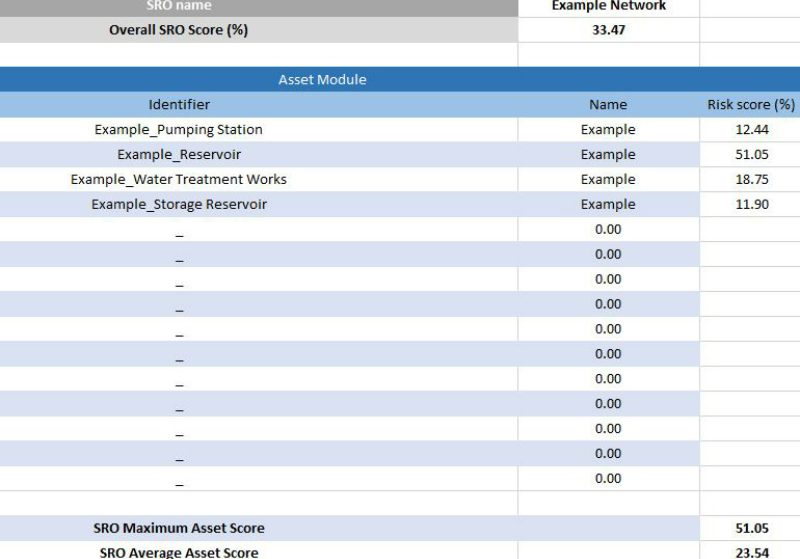Risk assessing pathways of invasion
Managing INNS (Invasive and Non-Native Species) is often underpinned by the application of risk assessments to aid in prioritising and targeting management
+ Read moreReducing the risk of transferring invasive and non-native species (INNS) is driven by national legislation and policy. A key focus for water companies is understanding the risk of transferring INNS in relation to activities at their assets, raw water transfers (RWTs) and nationally important Strategic Resource Options (SROs).
As water resources are put under increasing pressure by drought conditions and growing population, planning for the future supply of water is a huge undertaking for water companies and legislators. SROs, or Strategic Resource Options, are approaches being investigated by water companies to meet these growing demands under challenging circumstances. SROs are often innovative solutions consisting of transfer solutions, desalination, water recycling or new infrastructure such as a reservoir.
APEM’s dedicated INNS team have developed a quantitative robust and adaptable assessment tool, the SRO Aquatic INNS Risk Assessment Tool (SAI-RAT), which can be used by the water industry to consistently assess INNS risk and identify mitigation measures across the assets and RWTs which form SROs. The final product assesses the potential pathways of spread of a broad range of species and their life stages, and the current and future threat aquatic and riparian INNS may present.

Photo of Leighton Reservoir by Lynne Speight

The SRO Aquatic INNS Risk Assessment Tool (SAI-RAT) was developed by APEM, with a key focus on flexibility, accessibility and ease of use. SAI-RAT is the first assessment tool developed to allow water companies to quantify and compare the relative risk that SROs may present in relation to the transfer of INNS.
The utility and ease of use of the tool, providing a comparative score, gives a clear and easy to interpret final output, facilitating a risk-based prioritisation of actions and cost-effective allocation of resources. The tool also aids in understanding the type of biosecurity and control measures which could effectively be applied. By highlighting high risk locations and components of an SRO, water companies can reliably target these points and reduce the risk of INNS transfer considerably, therefore helping in protecting the environment from potential future invasions.
SAI-RAT has filled a key role requirement set out by Ofwat as part of the Regulatory Alliance for Progressing Infrastructure (RAPID) to ensure the environmental impact of each SRO is adequately appraised to a consistent standard and ensuring they are the best value for the environment. SAI-RAT has become the standard of the assessment of INNS risk in relation to SRO and, using the individual modules, is also widely used for the assessment of multiple assets and RWTs. The tool also uses a novel INNS functional group mechanism, which aids in accounting for future risks rather than only examining species known to be currently present.
The tool can be used during any phase of SRO planning, to provide a rapid indication of the inherent INNS risk at that point in time, identifying where mitigation options can be implemented and what measures are most appropriate. The tool is highly adaptable and can provide an assessment mechanism for water resource planners, as well as asset and operational managers. The adaptability and modular design of SAI-RAT means that it can be continually refined as new data is gathered or the regulatory landscape changes, providing considerable futureproofing and applicability to water industries and aquatic asset use beyond the borders of the UK.

An image of the invasive zebra mussel (Dreissena polymorpha)

Managing INNS (Invasive and Non-Native Species) is often underpinned by the application of risk assessments to aid in prioritising and targeting management
+ Read more
Lakes and ponds are particularly susceptible to invasive species APEM are experts on invasive non-native species, find out more
+ Read more
With the number of marine invasive and non-native species (INNS) in the UK ever-increasing, the chances of finding one or more on-site have never been higher
+ Read more